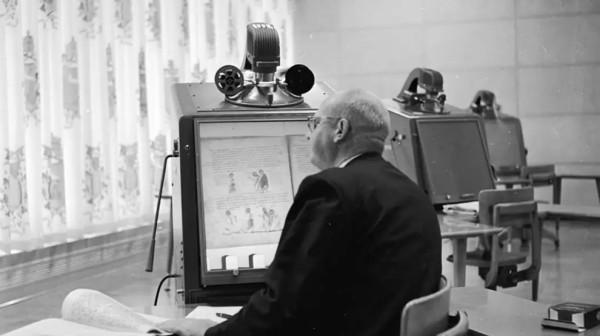I suppose he was just way ahead of his time with his mechanical display, and of course then really cheap paperbacks killed off his idea. It’s a bit like internal combustion engines killed off early electric vehicles. Sometimes time is needed to mature an idea and have the materials ready…
The early 20th century saw a revolution in entertainment. Connoisseurs of the arts no longer had to go to the playhouse to see dramas or the concert hall to hear music. Cinemas projected movie stars onto massive screens, and phonographs piped recordings of popular songs into people’s homes. Print books, however, were harder to reinvent. That didn’t stop one enterprising artist from envisioning the first e-book nearly 70 years before its time.
American writer Bob Brown was inspired to bring the written word into the electronic age after seeing a film in 1930. The visual medium was progressing fast, with “talkies” quickly supplanting silent pictures. He felt his medium of choice was falling behind in comparison. “We have the talkies, but as yet no Readies,” Brown wrote. “Writing has been bottled up in books since the start[…] It is time to pull out the stopper.”
His proposal continued with a description of what his so-called “Readies” would look like. Brown’s concept for the machine had many of the same advantages as modern e-readers. It would “allow readers to adjust the type size and avoid paper cuts” as well as “read hundred-thousand-word novels in 10 minutes” if so desired. Instead of e-ink, this would be accomplished by ribbons of tiny text that readers would scroll manually behind a sheet of magnifying glass. An ingenious combination of microfilm and ticker-tape machines, the device would be more cumbersome than a Kindle but still convenient compared to a personal library.
See https://www.mentalfloss.com/posts/readies-1930s-e-book-invention

